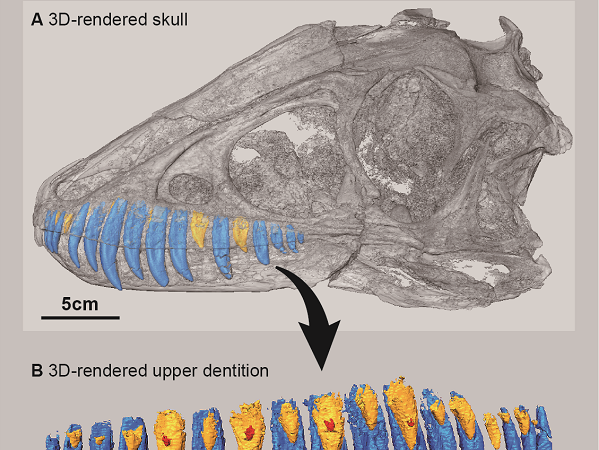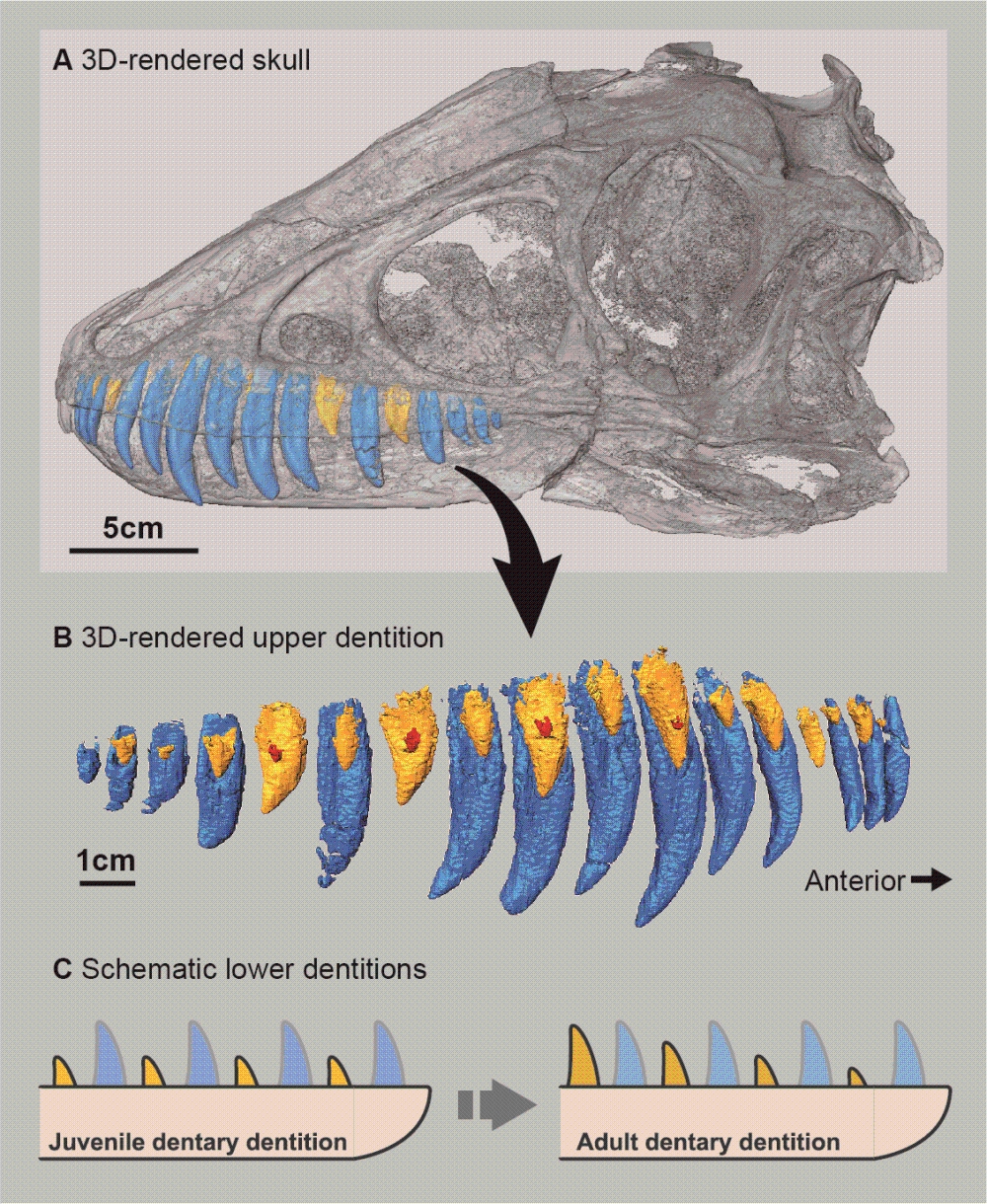New diet, new teeth Rare dinosaur jaw opens wide for imaging study


Blue indicates mature teeth. Yellow and red indicate immature teeth. (A) Translucent image of a Tarbosaurus skull’s left side. The arrangement and type of teeth in the upper-left side of the dinosaur’s mouth are visualized in color. (B) Type, number and arrangement of upper-left teeth viewed from the inner side of the mouth. (C) Comparison of juvenile and adult arrangement of lower teeth. Tooth replacement in the adult advances to the front side.
© 2019 Tomoya Hanai.
Dinosaurs like T. rex likely grew new teeth in different ways to best suit their changing diet as they developed from juveniles to adults. This discovery was made using new imaging studies of a young dinosaur skull.
The research was carried out by graduate student Tomoya Hanai and Associate Professor Takanobu Tsuihiji at the University of Tokyo Graduate School of Science.
"The juvenile specimen that we examined has an exceptionally well-preserved skull. I was excited to get an opportunity to analyze such a beautiful specimen, which is very rare around the world," said Hanai.
The skull was originally discovered in the Gobi Desert, in Mongolia, in 2006. Imaging studies that do not destroy fossils have become common over the past two decades, but have rarely been used to analyze patterns of tooth replacement in dinosaurs.
In animals like sharks and reptiles, types of creatures scientists call nonmammalian vertebrates, teeth are continually replaced so that the animals always maintain a mouth full of functional teeth. Researchers used X-ray computed tomographic (CT) imaging and 3D visualization techniques to examine the teeth of a juvenile Tarbosaurus bataar, between 2 to 3 years old when it died. The advanced imaging techniques allowed researchers to observe immature teeth concealed by the jaw bones.
Many scientists have studied dinosaur teeth and skulls in detail to understand their feeding habits. However, tooth replacement patterns were never studied extensively in tyrannosaurids, the group of carnivorous dinosaurs including Tyrannosaurus rex and Tarbosaurus bataar that diversified during the Late Cretaceous period (100 million-66 million years ago).
Tooth replacement patterns are biologically significant because teeth are worn down and damaged over time as animals bite down on their food. The patterns of wear and replacement of teeth can reveal details about animals' feeding behavior.
"Previous studies have suggested that the feeding habits of tyrannosaurids likely changed as they grew. Data from the juvenile Tarbosaurus examined in our study are, therefore, especially interesting," said Hanai.
The results from the current study have clarified the regularity of tooth replacement in this specimen and point to the possibility that tooth replacement patterns changed during growth in this dinosaur.
Papers
Tomoya Hanai and Takanobu Tsuihiji, "Description of tooth ontogeny and replacement patterns in a juvenile Tarbosaurus bataar (Dinosauria: Theropoda) using CT‐scan data.," The Anatomical Record: October 31, 2018, doi:10.1002/ar.24014.
Link (Publication )
)
Related links
- Graduate School of Science

- Department of Earth and Planetary Science, Graduate School of Science

- Geosphere and Biosphere Science, Department of Earth and Planetary Science, Graduate School of Science (Japanese)






